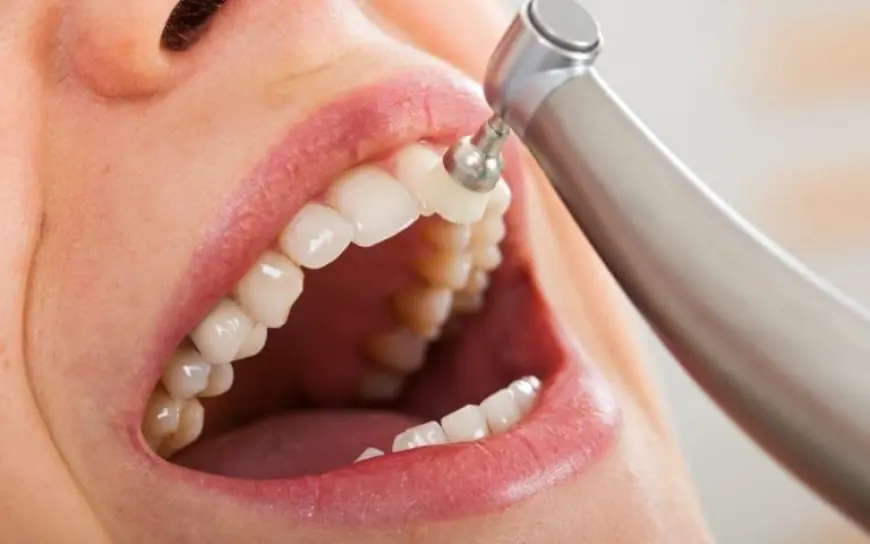The Real Costs of Getting a Tooth Filling Explained
Do you want to get the Best Tooth Filling Cost in Dubai & Abu Dhabi? We have the most affordable costs available at our clinic for all kinds of tooth fillings.

If you're facing the possibility of getting a tooth filling, you're not alone—it's one of the most common dental procedures. However, before heading to your appointment, understanding the real costs of getting a tooth filling is essential. Many factors influence the overall cost, and knowing what to expect can help you make an informed decision. In this article, we'll break down the different aspects that impact the price of a Tooth Filling Cost Dubai giving you a clearer picture of what’s involved in the process.
What Is a Tooth Filling and Why Is It Necessary?
A tooth filling is a dental restoration used to repair cavities or damaged teeth caused by decay. During the procedure, the dentist removes decayed material from the tooth and fills the cavity with a durable material, restoring the tooth’s structure and function. Fillings prevent further damage, protect against infection, and help maintain your overall oral health. Without a filling, cavities can grow larger, leading to more complex and expensive treatments such as root canals or tooth extractions.
Factors That Affect the Cost of Tooth Fillings
Understanding the key factors that affect the price of a tooth filling can help you make more informed choices when it comes to treatment. Here are the most important considerations:
Type of Filling Material
The material used to fill the cavity is one of the most significant cost determinants. Common materials include:
- Amalgam Fillings: These silver-colored fillings are made of a mixture of metals like silver, mercury, and tin. They are known for their durability and cost-effectiveness but are less aesthetically pleasing.
- Composite Fillings: Made from tooth-colored resins, composite fillings are more discreet than amalgam fillings, making them ideal for visible teeth. However, they tend to be slightly more expensive due to the material’s aesthetic appeal and ease of use.
- Porcelain Fillings: Porcelain fillings, also known as inlays or onlays, are durable and blend well with natural teeth. While they provide a natural appearance, they are typically more expensive than other options.
- Gold Fillings: Known for their strength and long lifespan, gold fillings are highly durable but come at a premium price. They are ideal for patients seeking a long-lasting solution for their dental needs.
Size and Location of the Cavity
The size of the cavity and its location in the mouth play a major role in the cost. Larger cavities, which require more filling material and additional time to treat, will generally result in higher costs. Additionally, cavities in harder-to-reach areas may require more specialized equipment or techniques, further increasing the price. Simple fillings on visible teeth will often be less expensive than more complex fillings on molars or teeth that are difficult to access.

Complexity of the Procedure
Not all filling procedures are straightforward. If a tooth is severely decayed or if the filling requires additional steps—such as numbing the area, removing more decay, or restoring tooth structure—the overall cost will increase. More complicated cases may require more time, skill, and equipment, which adds to the final price of the treatment.
Geographic Location
The cost of dental treatments can vary significantly based on your location. In larger cities or areas with a higher cost of living, dental services—including tooth fillings—tend to be more expensive. On the other hand, regions with lower living costs may offer more affordable options. It’s important to consider where you live when planning for your dental treatments.
Benefits of Getting a Tooth Filling
While the cost of a tooth filling may be a concern, the benefits far outweigh the price. Here’s why fillings are essential for your dental health:
- Prevention of Further Decay: Fillings protect your teeth from further damage, preventing cavities from spreading and potentially causing more severe issues like tooth abscesses.
- Restored Functionality: A filled tooth restores its function, allowing you to chew and speak comfortably without pain or sensitivity.
- Improved Appearance: Materials like composite resins and porcelain fill the cavity while blending seamlessly with your natural tooth color, providing a more aesthetic result.
- Long-Lasting Solution: Many fillings can last for several years, making them a durable solution for maintaining your oral health.
The Tooth Filling Procedure: What to Expect
Understanding the process of getting a tooth filling can ease any concerns you may have about the procedure. Here’s what typically happens during the treatment:
- Initial Consultation: The dentist will examine the affected tooth, often using X-rays to determine the extent of the decay.
- Numbing the Area: A local anesthetic will be applied to numb the area around the affected tooth, ensuring you don’t feel any pain during the procedure.
- Removing Decay: The dentist will use specialized tools to remove the decayed portion of the tooth, making sure the cavity is fully cleaned.
- Filling the Cavity: Once the decay is removed, the dentist will place the chosen filling material into the cavity and mold it to match the shape of the tooth.
- Finishing Touches: After the filling has been placed, the dentist will check your bite to ensure everything feels natural and make any necessary adjustments.
Post-Treatment Care for Fillings
Taking care of your Tooth Filling Cost in Dubai after the procedure is crucial for ensuring its longevity. Here are some post-treatment tips:
- Avoid Eating Hard Foods: For a few hours after the procedure, avoid hard, crunchy, or sticky foods that could dislodge or damage the filling.
- Maintain Good Oral Hygiene: Brush and floss your teeth regularly, making sure to clean around the filling to prevent plaque buildup.
- Routine Checkups: Schedule regular dental checkups to ensure that your filling remains in good condition and to detect any potential issues early on.
Conclusion
The real costs of getting a tooth filling depend on various factors, including the material used, the size and location of the cavity, the complexity of the procedure, and where you live. While it’s essential to consider the cost, it’s also important to remember the long-term benefits of fillings, which protect your oral health and restore the functionality of your teeth. By understanding these key factors and making informed decisions, you can navigate the process of getting a tooth filling with confidence, ensuring that your smile stays healthy and bright for years to come.
What's Your Reaction?
 Like
0
Like
0
 Dislike
0
Dislike
0
 Love
0
Love
0
 Funny
0
Funny
0
 Angry
0
Angry
0
 Sad
0
Sad
0
 Wow
0
Wow
0





















































